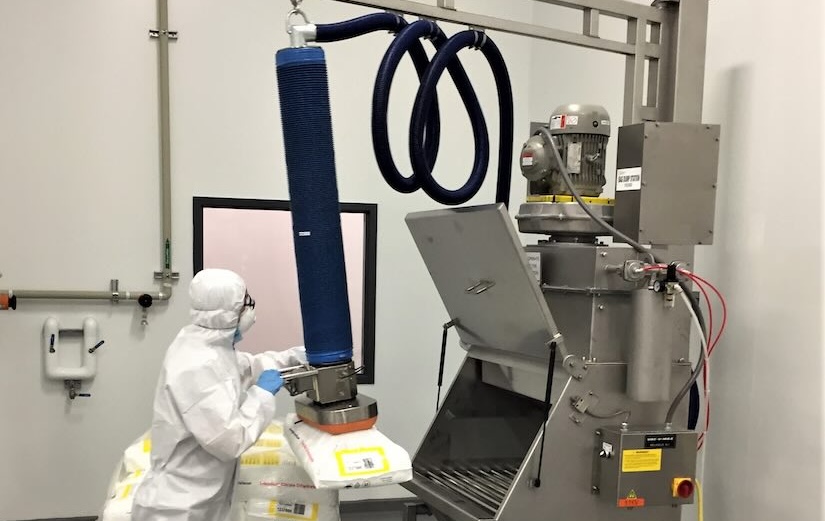Follow the checklist to find the right way to sample and measure gases before it reaches the conditioning system near the analyzer.
When performing sample analysis in an analytical sampling system, an operator may need to precondition the sample first, before it reaches the sample conditioning system near the analyzer. If so, there are two design options for sample preconditioning:
- A field station module mounted close to the tap
- A fast-loop module mounted close to the analyzer.
The primary difference between the two is when the sample is preconditioned-either before it enters the sample transport line (field station module in Figure 1) or after it reaches the analyzer location (fast-loop module in Figure 2).
The choice of system design hinges on the type of sample-transport system used and whether the sample is a gas or liquid.
First, determine which of two sample-transport systems will be used:
- A single-line system, which transports the sample to the analyzer location and on to a local disposal point, such as a flare header or oily drain
- A fast-loop system, which transports the sample to the analyzer location, where a small portion of the flow passes through the analyzer, and most of the flow returns to a process return tap.
The next choice is whether to use a field station module, a fast-loop module, or neither. In general, single-line systems may or may not use a field station module, while fast loops nearly always use a fast-loop module. A system rarely will use both a fast-loop module and a field station module.
Most field station modules are for gas samples and use single-line sample transport. Typically they are subassemblies containing devices that filter the sample, reduce the pressure of a gas sample, or vaporize a liquid sample.
Most fast-loop modules are for liquid samples and use fast-loop sample transport. Fast loops are becoming more popular for gas samples, too, due to environmental concerns related to sample disposal. Typically, fast-loop modules are subassemblies incorporating devices that filter the analyzed sample and control the flow rate.
There are some additional differences between field station modules and fast-loop modules to help determine the right setup for an analytical sampling system (see Table 1).
Field station module
A field station module preconditions a sample before it enters the sample transport line and travels to the analyzer (Figure 1).
Most field station modules change the pressure or temperature of a sample, or they remove unwanted solids or liquids from the stream. Some change the state of a sample by completely vaporizing or condensing it. Others allow calibration gas entry, while some even enable analysis of the sample at the sampling tap, in which case there is no sample transport and no need for a single-line or fast-loop transport system.
The two most common applications for a field station module are to reduce gas sample pressure or to vaporize a liquid sample. In either case, it’s difficult to return the low-pressure gas directly to the process, so this type of field station module always uses a single-line transport system.
If the sample flow must return to the process, a sample recovery system may be necessary.
Fast-loop module
A fast-loop module preconditions the sample after it reaches the analyzer location, as seen in Figure 2. In most fast loops, sample conditioning starts when flow is directed to the analyzer, usually through a special fast-loop filter located close to the analyzer. A fast-loop module features a fast-loop filter and devices that control sample pressure and flow before it returns to process.
A fast loop typically does not precondition the sample in the field, so it rarely needs a field station. Most of the fast-loop flow remains unconditioned and returns to the process.
Gas samples
For a gas sample, there are strong arguments for using a field station module to reduce its pressure or to clean it up before transportation.
First, reducing gas pressure improves response time; for a given vent flow rate, dropping the line pressure in half makes the gas move twice as fast. Halving the line pressure also halves the relative saturation, which reduces the chance of condensation in the lines. In addition, a gas at lower pressure is safer.
These incentives point to considering a field station module for any process gas that has a pressure higher than 3 barg. If it exceeds 5 barg, always reduce the pressure unless there is a very good reason not to.
In practice, there are several reasons why high gas pressure in the sample line might be maintained. One reason is the problem of disposal. Venting a sample flow to atmosphere or flare is only acceptable for innocuous samples devoid of carbon or sulfur. Flaring a hydrocarbon or hydrogen sulfide sample generates unacceptable carbon dioxide or sulfur dioxide emissions. These samples may need to be returned through a fast loop, and that could demand a higher pressure in the line.
Other reasons for not dropping the pressure include:
- The measurement is required at full process pressure, as with dew point temperature and density
- The analyzer needs high sample pressure to measure ppm or ppb levels of the analyte
- The process tap location is inaccessible or exceptionally hazardous.
If any of the above constraints apply, the fast loop should run at a high gas pressure. However, a pressure regulator still may be needed after the fast-loop module to reduce sample pressure on its way to the analyzer.
Here are a few additional considerations for sampling gases:
- Sometimes there is a need to filter a gas before transporting it. Process gases are more likely to carry a heavier dust load than process liquids and may need special probes and filters to remove most of the solids before transportation.
- Gas transport lines should be dry. If the gas contains an oily liquid mist, it should be removed before transporting the sample. An oily line can act as a chromatographic column, causing different response times for each substance in the sample.
- A fast loop can transport a gas containing minor amounts of suspended solid, provided the flow is turbulent.
Liquid samples
Fast loops are common for liquid samples because liquids are often difficult to dump or destroy, unless the sample is just water. Liquids contain more mass and, for a given volumetric flow, tend to be more valuable than gases.
Even water can be too expensive to waste. For example, when analyzing high-purity water, the uncontaminated liquid is often looped back to the process.
A fast-loop module is usually a better choice than a field station module when a liquid sample includes a small amount of suspended solids or emulsified liquid. The fast loop moves the problem to the analyzer location where it is easier to solve. The flow in the supply line must be turbulent to keep the sample well mixed.
Not all samples need preconditioning. But when the need is there, the preconditioning process is likely to influence the design of the sample-transport system. If gas samples are preconditioned before they enter the sample transport line a single-line system with a field station module likely is needed. If liquid samples are preconditioned after they reach the analyzer location, a fast-loop system with a fast-loop module is the choice.
While field station modules are sometimes essential, always consider potential maintenance challenges when determining their use and location. Don’t locate sampling devices in the field unnecessarily. It’s easier to monitor the performance of conditioning devices when they are located at grade, preferably close to the analyzer. And when the time comes, it’s easier to repair them.
Randy Rieken is market manager for chemical and refining for Swagelok Company. He can be reached at [email protected]. This article was adapted from "Industrial Sampling Systems: Reliable Design and Maintenance for Process Analyzers" (2013), a process sampling textbook authored by Tony Waters and published by Swagelok Company.



